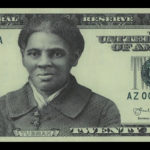Women benefited slightly more from boosts to the minimum wage.

By Elise Gould*
Economic Policy Institute • March 23, 2016 —
In 2015, wages for low-wage workers rose faster in states that increased their minimum wage than in states that saw no minimum wage increase. Working people in states that increased the minimum wage through legislation—which led to larger increases than indexed increases—saw the biggest boost to their wages, regardless of gender. Women, however, benefited slightly more from boosts to the minimum wage.
Overall, the 23 states with a minimum wage increase, plus the District of Columbia, account for about 40 percent of the U.S. workforce.
In 2015, 11 states and the District of Columbia (shaded green on the map) increased their minimum wage through legislation and 11 states (shaded blue) increased their minimum wage through indexing to inflation. The remaining 27 states did not increase their minimum wage in any way.
Comparing 10th percentile wage growth between states grouped by whether they had a minimum-wage increase and by the type of increase yields highly suggestive results. When looking at 10th percentile wages by gender, wages grew more slowly in states without minimum-wage increases than in states with any kind of minimum-wage increase.
Among states with any minimum-wage increase, the growth in the 10th percentile wage was faster in states with legislated increases (which are, on average, higher than indexed increases). This holds true for both men and women at the 10th percentile. For example, the 10th percentile women’s wage grew 5.2 percent in states with legislated minimum-wage increases, compared with only 3.1 percent growth in states without any minimum-wage increase.
This is a clear indication that strong labor standards like the minimum wage can benefit workers even when workers generally have severely reduced bargaining power.

*Elise Gould is a Senior Economist and Director of Health Policy Research at the Economic Policy Institute www.epi.org.











